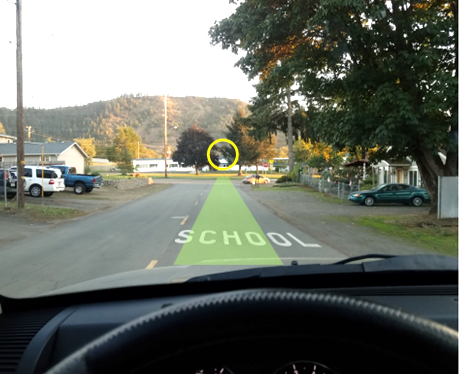Lesson Four: Vision Control (1.4)
There are many areas that require your attention while driving, such as where to look, where you are going, where you want to go and what is around your vehicle.
Vision is essential to operating a motor vehicle. You rely heavily on your vision to collect and process information while driving. This information helps you make decisions.
Vision is comprised of three parts: central, fringe, and peripheral. Your central vision sees detail. It gives you the focus you need to read this. While you read, notice you can see your hands and the edges of the book with your fringe vision. Now relax and concentrate. What parts of the room can you see with your peripheral vision? What color are the walls? Is there any movement in the room?

Target
A target is a stationary object that is as far ahead as you can see, above the center of your intended path. The target area is the area around the target. Your targeting path is the space you intend to drive through on the way to your target. Targeting helps you steer accurately and find important information early. Where you look is where you will tend to steer.

 Target- Central and Fringe Vision
Target- Central and Fringe Vision
Essential Questions
-
How is each type of vision used while driving?
-
What is a target?
-
What part of your vision do you use to see your target and why?
The field of vision in which you can see clearly while looking straight ahead that aids in determining vehicle position to the roadway.
The space between central and peripheral vision.
Vision to the side that sees color and motion change.